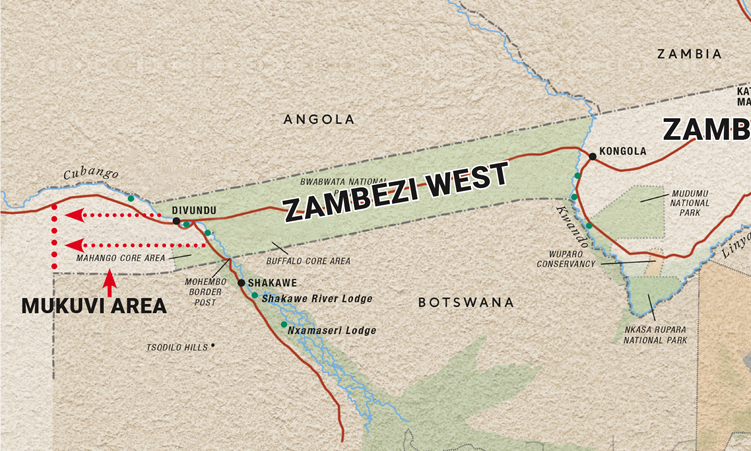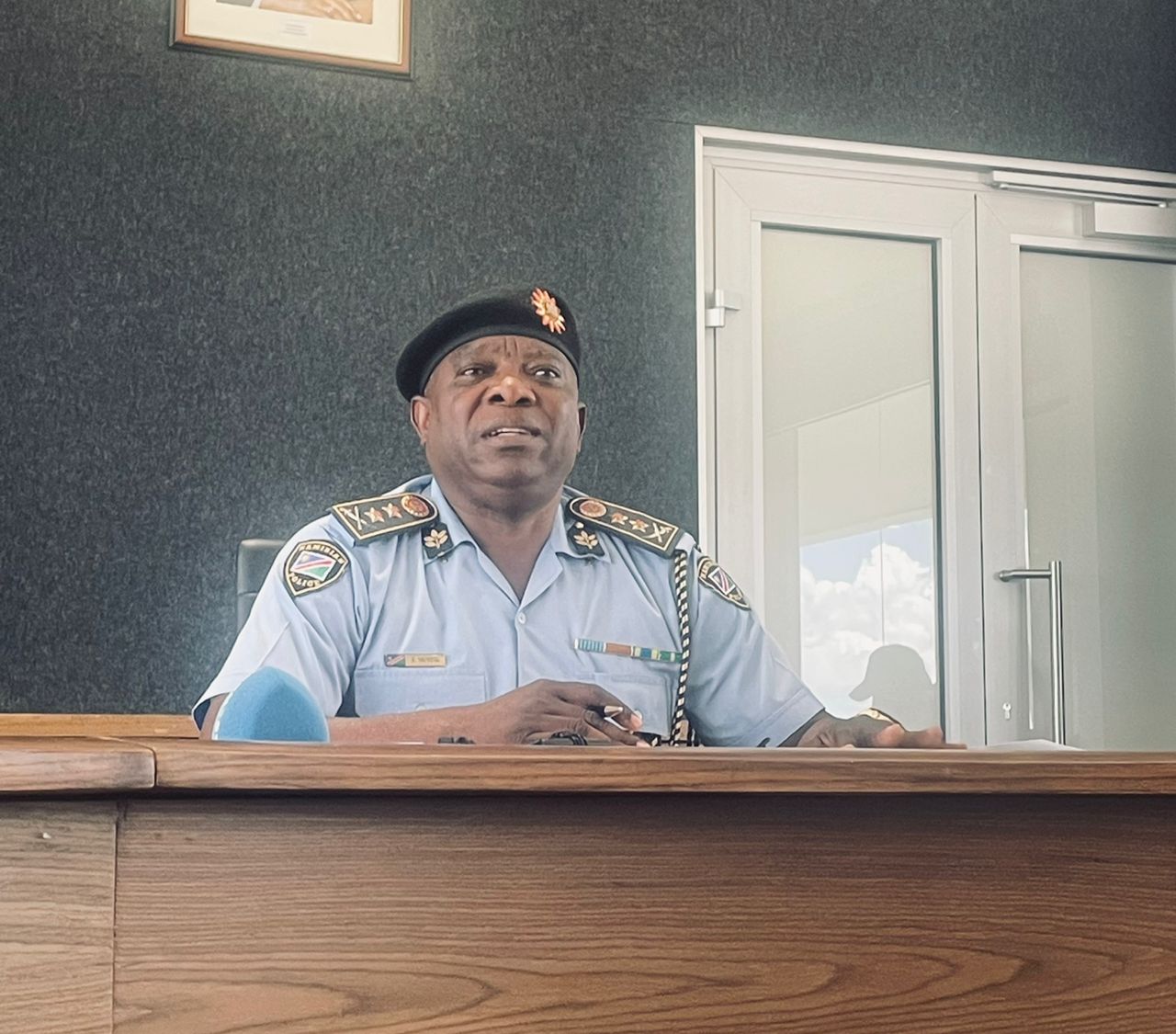Some traditional leaders and residents of the Zambezi region want the border line with the Kavango regions reinstated, and call for the name of the region to revert to Caprivi.
They raised their concerns at the regional public consultations by the fifth Boundaries Delimitation and Demarcation Commission earlier this week.
Citing a lack of consultation when the name of the region was changed in 2013, they said they want the region’s name to be changed back to Caprivi as a matter of cultural identity.
Speaking at the same consultations, Zambezi regional governor Lawrence Sampofu said he is in support of the residents’ demands to shift the border between the Zambezi and Kavango East regions, and that it should be moved back to the Mukuvi area.
Residents said traditionally the boundary between the two regions was at Mukuvi village, however, it was moved to Divundu and, in 2013, moved to Cheto by the previous Delimitation and Demarcation Commission.
Sampofu told the commission it would be best if they returned the Zambezi regional boundary to the middle of the Kavango River, as per the 4 May 1977 agreement between the then Hambukushu chief Mayabero, former Mafwe chief Richard Temuso Muhinda, and the then Masubia chief Maiba Moraliswani at Kongola Fort.
“The reduction of the region in area size has negatively affected the population size and, subsequently, the allocation of the development budget. Lastly, the continuous easterly movement of the regional boundary affecting only one region over three consecutive boundary delimitation and demarcation commissions is indeed a worrisome trend which does not support the principles of one Namibia, one nation,” Sampofu said.
Sampofu added that he is also in support of the establishment of a new constituency, which will be named Bwabwata for the San community, which will enable them to manage it themselves.
He added that this constituency should start on the Kwando River, stretching to the middle of the Kavango River.
Namibian Lives Matter Movement (NLMM) chairperson Sinvula Mudabeti specifically highlighted how it’s disheartening that the region keeps on losing a large portion of its ancestral land to Kavango East and Botswana.
He also made reference to the 2018 border treaty between Namibia and Botswana, whereby Situngu Island was given to Botswana and a number of islands in the Mayeyi Traditional Authority now belong to Botswana.
Additionally, he said through the 1999 International Court of Justice ruling, the region lost Kasikili Island to Botswana.

“It is common knowledge that the Zambezi region is the only region in the whole country that has been reduced by every other delimitation commission. The loss of ancestral land for the Zambezi region has led to painful reminders of how post-colonial life for the residents has become one of loss, pain and discrimination. The Zambezi region borders Botswana, Zambia, Angola and Zimbabwe, therefore, the delimitation process in Zambezi has international implications that need to be considered carefully,” he said.
Furthermore, Mudabeti added that the shifting of the border between the Kavango East and the Zambezi regions from Mukuvi to Divundu and later on from Divundu to Cheto, shows that they are denied a common heritage as Namibians.
“African Union (AU) Policies on Borders and the AU Border Programme call for the principle of respecting borders existing upon achievement of national independence, which is enshrined in the Charter of the Organisation of African Unity, Resolution AHG.
“What Zambezi has seen through the loss of their ancestral land is the opposite of what the AU Border Programme seeks to achieve. The cutting of land from Zambezi to other countries and regions, though premised on issues of administrative good, is a deliberate move that negatively affects the development of the Zambezi region, and we have witnessed political and economic sabotage,” he said.
The respective four traditional authorities: Mashi, Mayeyi, Masubia and Mafwe, support the demand to shift the border between the two regions to the Mukuvi area.
Zambezi resident Diaz Silubanga said he identifies himself as Caprivian, just like the Herero’s pride themselves on their identity.
“If I cannot be called a Caprivian, then it means I have lost my identity. Whatever agenda is associated with the Caprivi name is not on me, as I’m a proud Caprivian and Namibian. Therefore, it should not be disconnected from me,” he said.
Furthermore, residents said Katima Mulilo Rural should be divided into two constituencies, as currently essential services are only concentrated in one part, excluding residents on the other side.
Another resident, Jimmy Lilungwe, said in the Katima Rural constituency, those living in the western part must travel over 100 kilometres to access services provided at the constituency office.
Another request was made by activist Dobson Kwala for the creation of the Imukusi constituency, by cutting from Kabbe North, Katima Rural, Sibbinda and Kongola to bring services closer to residents who are forced to travel long distances.
Kwala added that the issue shouldn’t be seen as political because there’s ignorance of the law on the side of the Hambukushu, who don’t seek legal attention by summoning the Mafwe Traditional Authority to the High Court if they have a problem.

“Based on population growth or else, there’s no need to extend Kavango into Bwabwata National Park while the Barakwena (San) community reside there.”
Kwala said if it is based on culture, then there’s a need to approach the High Court to hear the matter. He added that the Hambukushu Traditional Authority broke the park policy that protects the property, and tourism will be disturbed if a land management plan is not put in place.
He further advised the people residing between the regions to be calm and not stir up tensions among themselves.
The two regional pressure groups, NLMM and the Zambezi Development Associations (ZDA), are also in support of these submissions and strongly expressed their feelings of disappointment about how they continue to lose land to Kavango every 10 years following delimitation commission recommendations.
Meanwhile, ZDA chairperson Blessing Maanda has removed the regional signboard situated at Cheto village to indicate the association’s seriousness to the government about wanting to have the borders shifted back to the Mukuvi area.
Political analyst Ndumba Kamwanyah criticised the move by the ZDA to remove the signboard.
He said protesting while they have the platform to air their concerns with the delimitation commission was unnecessary.
“The Hambukushu and the Zambezi people should realise that they are family, as it is not by accident that they live close to each other in terms of boundaries. Therefore, whatever differences are there, they should discuss them as a family and rely on historical narratives.
“I hope that the delimitation committee will consult historians, as well as old people in the two regions who know the historical background of the boundaries, so that the issue will be resolved in a peaceful and calm manner. People should avoid making this issue of the boundary between the two regions a political or tribal issue, because it might have serious implications,” he said.
He added that he was in agreement with the proposal for the San communities to get their own constituency, as they find themselves between the two regions.
Masubia Traditional Authority representative Alfred Ilukena noted that they support the notion to shift the boundary between the two regions to the middle of the Kavango River, as per the 1977 agreement.
He said the first boundary commission placed the border between the two regions at Mukuvi, however, subsequently the boundaries kept being pushed eastward, until it reached Cheto.
“Namibia is a unitary state, however, it seems that only one part of the country seems to be targeted when it comes to the continuous reduction in size. It is difficult in this region to tell you whether the population has increased or decreased, as every 10 years it changes. Out of all the regions in the country, the Zambezi region is the only one that’s unstable,” he said.
Stay informed with The Namibian – your source for credible journalism. Get in-depth reporting and opinions for
only N$85 a month. Invest in journalism, invest in democracy –
Subscribe Now!






